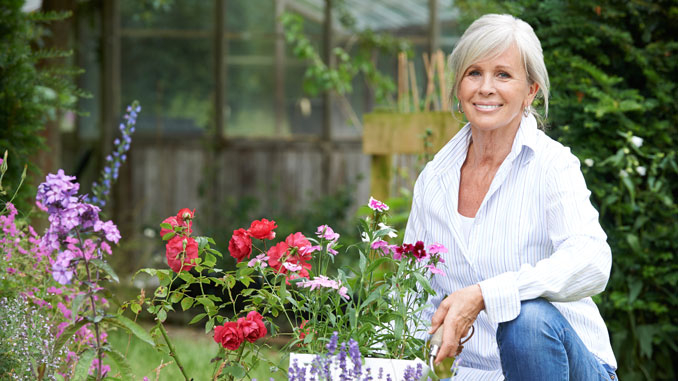
The sights, smells, and flavors of a well-loved garden are good for your soul, reducing stress and even building self-esteem. But more than that, gardening is good for your body, helping people get that daily dose of vitamin D, improving motor function, and burning calories. For seniors, however, this seemingly low-impact pastime can be surprisingly strenuous. Luckily, it is possible to adapt and thrive—just like your garden!
Get on my level
Working on the ground can be hard on the knees and back. Invest in an adjustable ergonomic kneeler that can double as a seat or, better yet, bring the gardening to you. Pot plants at your workbench, have raised beds installed, or consider vertical planting: options range from tall potting fixtures to walls of live plants.
Forget the heavy lifting
Working with pots can be another great alternative to keep you off the ground but avoid heavy terracotta pots that are awkward to carry and can strain your back easily. Opt instead for those made from lightweight resin, fiberglass, or fiberstone.
Weeds, weeds go away
Lay weed cloth and mulch to avoid unwelcome garden guests and the need to spend hours weeding. With these tips, any weeds that do manage to get in will be easier to pluck.
Reach for the sun
Yes, this is advice for the gardener, not just the garden: a quick stretch before and after gardening can get your blood flowing and help you avoid minor injuries.
Start at the kitchen counter
Sounds counter-intuitive to recommend gardening inside, but January is the perfect time to give those seeds a head start in your kitchen window and a good way to ease yourself into the gardening season. Plus, staying out of the cold can help stave off sticky joints and related injuries.

